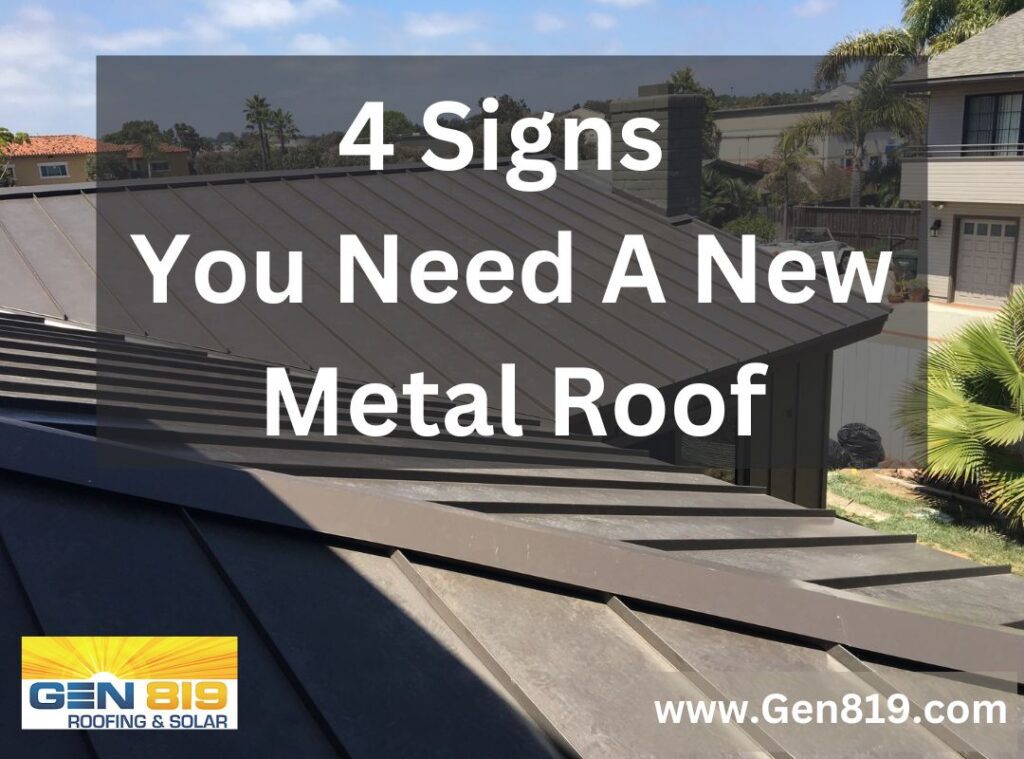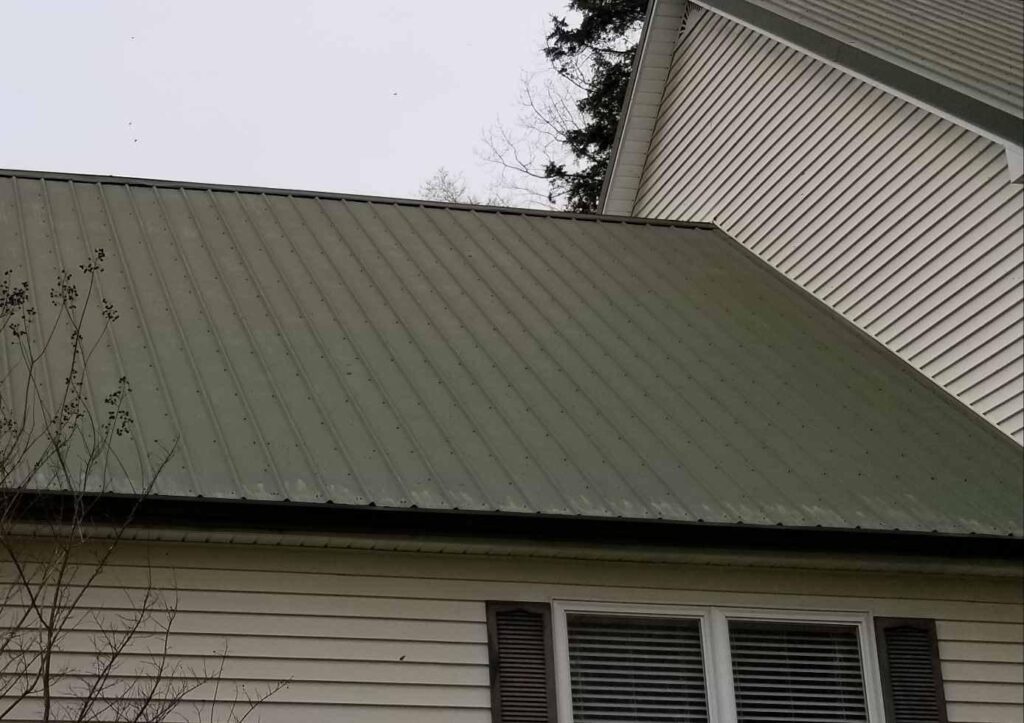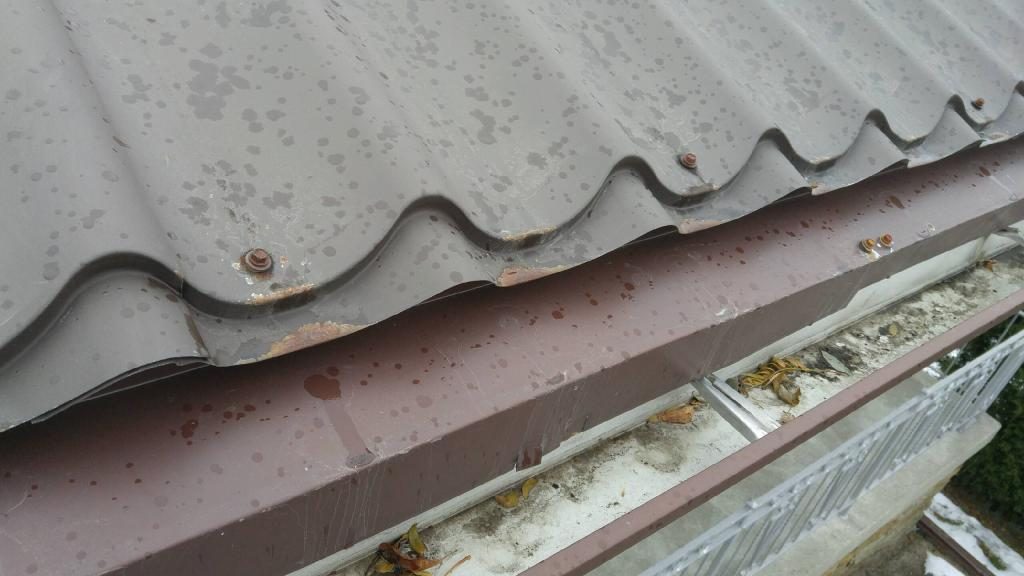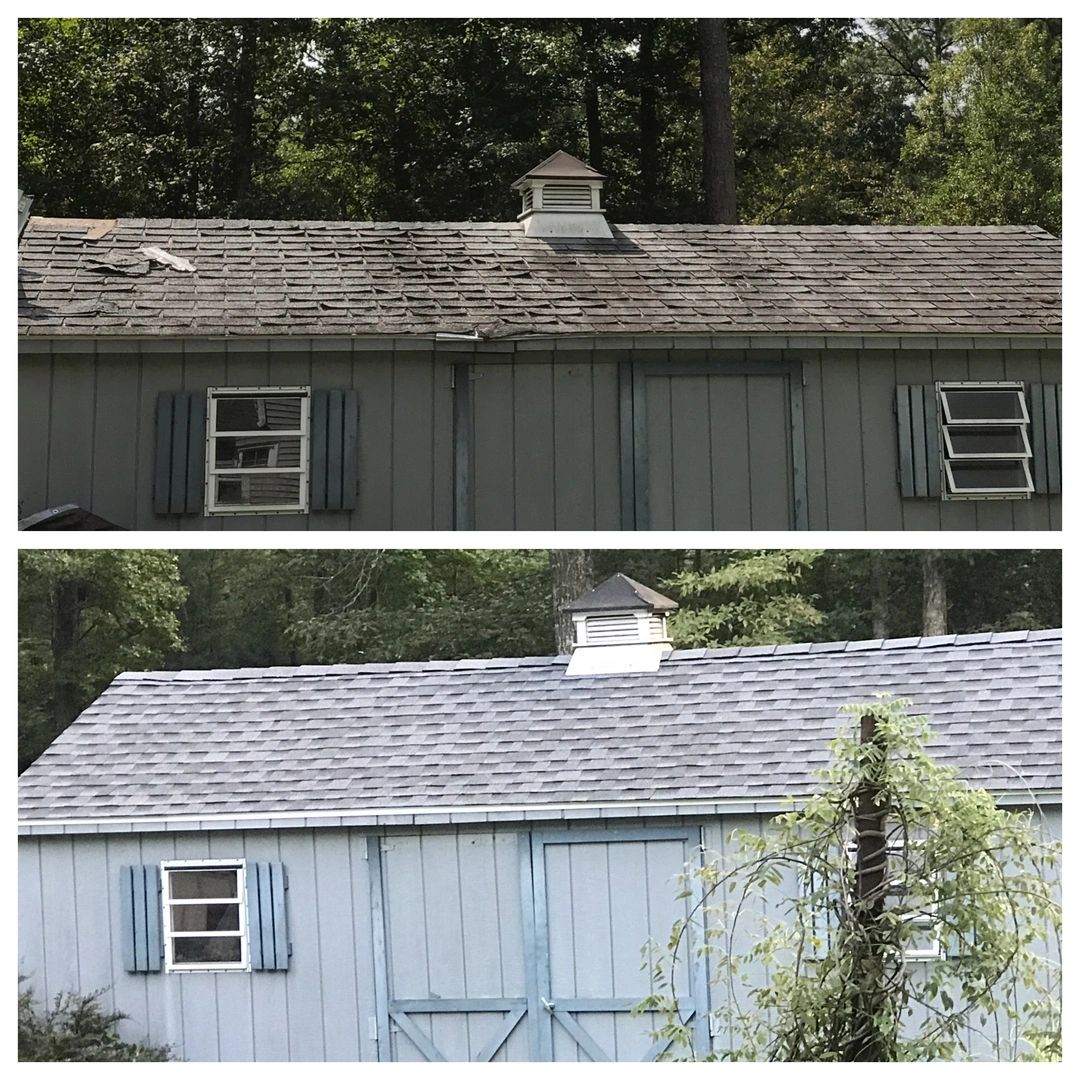If you own a metal roof, there may come a time when you start to wonder if it’s time for a replacement. Metal roofs are known for their durability, but just like any other material, they can wear out over time. So, what are some signs to look out for that indicate it’s time to replace your metal roof? In this article, we will explore the key indicators that suggest your metal roof is no longer performing at its best and needs to be replaced. From leaks and rust to loose panels and a decrease in energy efficiency, we will cover it all so you can make an informed decision about the future of your roof.

1. Age of the Metal Roof
When considering whether it’s time to replace your metal roof, the first factor to consider is the age of the roof itself. While metal roofs are known for their durability and longevity, they are not immune to wear and tear over time.
1.1. Expected Lifespan of Metal Roofs
On average, a well-maintained metal roof can last between 40 and 70 years. However, factors such as the quality of materials used, proper installation, and regular maintenance can affect the lifespan of your roof. If your metal roof is nearing or has exceeded its expected lifespan, it is worth considering a replacement.
1.2. Signs of Aging
As a metal roof ages, there are several telltale signs that indicate it may need to be replaced. These include:
- Fading or discoloration of the metal panels
- Loss of sheen or shine
- Visible signs of rust or corrosion
- Loose or missing metal panels
- Sagging or uneven roof surface
- Rotting or damaged roof deck
If you notice any of these signs, it’s important to address them promptly to prevent further damage and to maintain the structural integrity of your roof.
2. Significant Damage to the Metal Roof
In addition to the natural aging process, significant damage to your metal roof can also be a strong indication that it needs to be replaced. Various factors can cause such damage, and it’s important to identify and address them promptly.
2.1. Denting and Punctures
Severe weather events, such as hail storms or falling debris, can result in dents and punctures on your metal roof. While minor dents may not necessarily require immediate replacement, extensive damage can compromise the integrity of the roof and increase the risk of leaks.
2.2. Corrosion and Rust
Metal roofs are typically coated to protect against corrosion and rust. However, over time, this protective layer can degrade, leaving the metal vulnerable to the elements. If you notice visible signs of rust or corrosion, it is crucial to address the issue promptly before it worsens and causes further damage.
2.3. Loose or Missing Metal Panels
A metal roof relies on securely fastened panels to provide a watertight barrier. If you notice any loose or missing panels, it is essential to address them promptly to prevent water intrusion and structural damage.

3. Leakage and Water Damage
One of the most significant concerns with a deteriorating metal roof is the potential for water leakage and subsequent water damage. Identifying the signs of leakage is crucial to determine whether a roof replacement is necessary.
3.1. Interior Water Stains and Damage
Water leakage from a damaged metal roof can often lead to interior water stains and damage. If you notice water stains on walls or ceilings, it is a clear indication that there is a problem with your roof that needs to be addressed promptly to prevent further damage.
3.2. Visible Signs of Leakage
In addition to interior water stains, there may be visible signs of leakage on the exterior of your roof. These can include water dripping from the roof, wet spots on the roof surface, or signs of water accumulation in gutters and downspouts.
3.3. Water Accumulation on the Roof
If water accumulates on your metal roof instead of draining properly, it can indicate a problem with the roof’s design, such as improper slope or inadequate drainage. This can lead to potential water damage and should be addressed promptly.
4. Poor Energy Efficiency
Another factor to consider when contemplating a metal roof replacement is its energy efficiency. Older metal roofs may not have the same energy-saving capabilities as newer models, leading to higher heating and cooling costs.
4.1. Increased Heating or Cooling Costs
If you have noticed a significant increase in your energy bills, it may be due to poor insulation and heat transfer through your metal roof. Newer metal roofing materials often come with enhanced insulation properties, which can help you save on heating and cooling costs in the long run.
4.2. Lack of Insulation
If your metal roof lacks proper insulation, it can result in higher heat transfer, making it harder to maintain comfortable indoor temperatures. Upgrading to a newer metal roof with improved insulation can help you create a more energy-efficient and cost-effective home or building.
4.3. Inefficient Heat Transfer
Metal roofs can become hot to the touch under direct sunlight. If you notice that your metal roof is trapping excessive heat and making your living or working space uncomfortable, it may be an indication that the roof’s heat transfer properties are inadequate. Upgrading to a more energy-efficient metal roof can help mitigate this issue.

5. Constant Roof Repairs
If you find yourself frequently repairing your metal roof, it may be a sign that a full replacement is necessary. While occasional repairs are normal, a pattern of recurring issues indicates that the roof’s overall condition is deteriorating.
5.1. Frequent Need for Repairs
If you continually find yourself hiring professionals to patch up leaks, replace missing panels, or address other issues, it may be more cost-effective in the long run to invest in a new metal roof. Constant repairs can add up over time and may not effectively address the underlying issues.
5.2. High Maintenance Costs
Metal roofs typically require less maintenance compared to other roofing materials. However, if you find that your maintenance costs are becoming increasingly high or that the frequency of required maintenance is excessive, it may be a strong indication that a replacement is necessary. Investing in a new metal roof can provide you with peace of mind and potentially lower maintenance costs in the future.
6. Roof Deck Issues
The roof deck serves as the foundation for your metal roof. If you notice any issues with the roof deck, it can have a significant impact on the overall integrity of your roof.
6.1. Sagging or Uneven Roof Surface
A visible sagging or uneven roof surface is a clear indicator of underlying problems with the roof deck. This can be caused by various factors, such as water damage, improper installation, or structural issues. If left unaddressed, the integrity of your metal roof could be compromised, leading to more severe problems in the future.
6.2. Rotting or Damaged Roof Deck
If you discover that your roof deck is rotting or damaged, it can significantly impact the stability and performance of your metal roof. A compromised roof deck can lead to leaks, as well as potential structural issues. In such cases, a full roof replacement is often necessary to ensure the safety and longevity of your property.

7. Fading or Discoloration
Over time, metal roofs may start to fade or develop uneven discoloration. While cosmetic concerns may not be urgent, they can still impact the overall appearance and value of your property.
7.1. Color Fading and Loss of Sheen
The vibrant color and sheen of a new metal roof can gradually fade due to exposure to UV rays and other environmental factors. If your roof’s color has noticeably faded or the sheen has diminished, it may be time to consider a replacement to restore the aesthetic appeal of your property.
7.2. Uneven Discoloration
In addition to fading, metal roofs can also develop uneven discoloration over time. This can be caused by factors such as pollution, algae growth, or the accumulation of dirt and debris. While uneven discoloration may not affect the performance of your roof, it can detract from the overall visual appeal of your property.
8. Excessive Noise and Temperature
Metal roofs are known to be durable and long-lasting, but they can also produce excessive noise during rain or hailstorms. Additionally, metal roofs can contribute to temperature extremes inside the building if not properly insulated.
8.1. Loud Metal Roof during Rain or Hail
If the sound of rain or hail on your metal roof is excessively loud and disruptive, it can make it challenging to relax or concentrate indoors. Upgrading to a newer metal roof with enhanced soundproofing properties can help reduce the noise impact during inclement weather.
8.2. Temperature Extremes Inside the Building
Metal roofs have the potential to transfer heat more readily, resulting in higher indoor temperatures during the summer and colder indoor temperatures during the winter. If you find that your metal roof does not effectively regulate temperatures, it may be worth considering a replacement with improved insulation to enhance comfort and energy efficiency.
9. Outdated Appearance
An older metal roof may not necessarily match the architectural style or design preferences of your property. If you desire a new aesthetic or if your metal roof looks out of place, it may be time to explore replacement options.
9.1. Incompatibility with Building Style
Architectural styles evolve over time, and what was once considered trendy may appear outdated today. If your metal roof clashes with the overall style of your property, a replacement can help create a harmonious and visually pleasing exterior.
9.2. Desire for a New Aesthetic
Sometimes, the desire for a fresh and updated look is reason enough to replace a metal roof. Whether you want to enhance the curb appeal, achieve a more modern aesthetic, or match a new exterior color scheme, replacing your roof can provide you with the opportunity to transform the appearance of your property.
10. Planning for Renovation or Resale
If you have plans to renovate your property or sell it in the near future, the condition and appearance of your metal roof can play a significant role in its overall value.
10.1. To Improve Property Value
A well-maintained and aesthetically appealing metal roof can enhance the value of your property. If you are looking to boost curb appeal and attract potential buyers, a replacement can be an investment that yields a higher resale value.
10.2. Incorporating Upgrades or Design Changes
If you are planning a significant renovation or design change for your property, such as adding a new addition or altering the exterior color scheme, it may be an opportune time to replace your metal roof. This can ensure that your roof seamlessly integrates with the new design elements and enhances the overall aesthetic of your property.
In conclusion, there are several signs that indicate a metal roof may need to be replaced. These signs include the age of the roof, significant damage, leakage and water damage, poor energy efficiency, constant repairs, roof deck issues, fading or discoloration, excessive noise and temperature, outdated appearance, and planning for renovation or resale. Recognizing these signs and addressing them promptly can help maintain the integrity, functionality, and value of your property.
